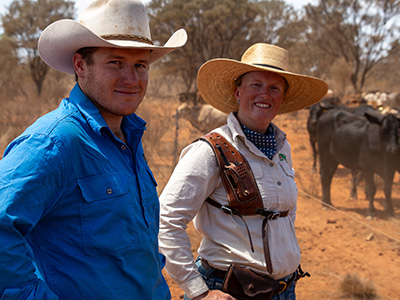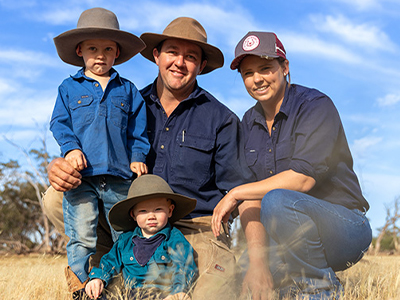Drought, at its core, is defined as “not having feed when you expect feed.” The recent floods, while providing a reprieve from drought in some areas, have created their own set of challenges. Flooding can lead to anaerobic conditions in the soil, causing it to harden and become less receptive to subsequent rains. In cases where soil disturbance is feasible, it’s recommended to take action. For situations where this isn’t practical, sound grazing management becomes crucial in nurturing the land and its vegetation back to life.
Transitioning from the extreme of flooding to a shortage of rainfall highlights the need for a multi-faceted approach to drought management. Our Farming and Grazing for Profit Schools teach three phases of drought: Proofing (preparation), Managing in a drought, and Recovering from a drought. Given the current circumstances, the focus has shifted to managing a drought, as it’s too late for extensive preparation.
Regardless of the phase, managing the impacts of drought comes with a cost, whether to livestock, the land itself, the people involved, or the business operations. The primary goal for managers is to mitigate these costs and ensure our country remains “rain ready.”
There are now 3 businesses in Australia which will not even have their cashflow dented. Those are the ones who have been issued with Carbon credits. They can choose when to sell those and maintain cashflow.
Managing People in a Drought:
- Develop a comprehensive plan and take actionable steps.
- Make early, small, and regular decisions. Late decisions create more pressure which lowers the quality of future decision making
- Assess labour requirements. Staff may have to be redeployed.
- Provide support and mentorship to others.
- Maintain open communication with staff, suppliers, banks, and stakeholders.
- Keep an eye on health triggers and mental health issues.
- Prioritise self-care, including taking breaks and holidays.
- Nurture green spaces around homes.
- Practice tolerance and understanding.
- Embrace the variability of seasons as part of the chosen agricultural business.
Managing the Land in a Drought:
- Regularly measure carrying capacity and adjust stocking rates accordingly.
- Extend rest periods for grazed areas.
- Monitor and maintain water quantity and quality.
- Identify and act upon critical dates.
- Manage total grazing pressure, including pest control.
- Keep an eye on ground cover and measure stocking rates monthly.
Managing Livestock in a Drought:
- Continuously recalculate stock flow and feed budget.
- Consider early or radical weaning and secure feed in advance for the weaners.
- Recognize emotional attachments to animals.
- Destock early to prevent ecological damage and provide more resources for remaining animals.
- Determine the order in which different classes of livestock will be sold.
- Seek agistment options and plan to sell stock if necessary.
- Prioritise animal health.
- Avoid substituting feed during drought, except when moving stock up a class is profitable.
- Consider grazing on failed crops.
Managing Business in a Drought:
- Assess the extent of drought conditions in surrounding areas.
- Explore contracting opportunities.
- Seek potential business opportunities eg adjust enterprises, sell surplus equipment
- Reduce overhead costs where possible.
- Consider baling poor crops and selling hay.
- Keep financial institutions informed.
- Conduct more frequent family meetings.
- Update stockflow and cashflow projections regularly.
- Avoid solely relying on drought subsidies.
- Understand the tax implications of forced sales.
- Draw from Farm Management Deposits (FMDs) to manage cash flow effectively.
In Summary
In light of the recent declaration of another El Niño event, memories of the harsh drought and devastating bushfires of 2019 are resurfacing. This blog post emphasises the importance of understanding El Niño and its impact on rainfall patterns in Eastern Australia. While the threat of wildfires looms once again, it’s equally vital to prepare for reduced rainfall.
The article delves into the relationship between the Southern Oscillation Index (SOI) and rainfall, with a focus on the historical trends associated with El Niño conditions. It underscores the need for a multi-pronged approach to drought management, emphasizing three key phases: Proofing (preparation), Managing in a drought, and Recovering from a drought.
Effective drought management is imperative, as it comes with costs to livestock, land, people, and businesses. The ultimate goal is to minimise these costs and ensure the country remains “rain ready.” The blog outlines strategies for managing people, land, livestock, and businesses during drought conditions, drawing insights from those who have faced similar challenges.
By following these recommendations, individuals and communities can better prepare themselves to confront the impacts of a changing climate and navigate the complex terrain of drought with resilience and adaptability.
For more information our RCS Australia’s coaching visit our Advisory page.












